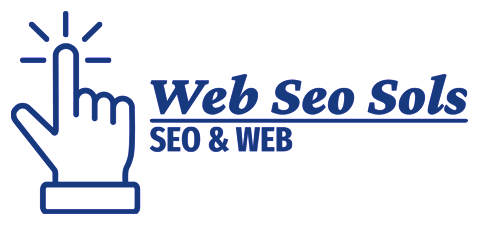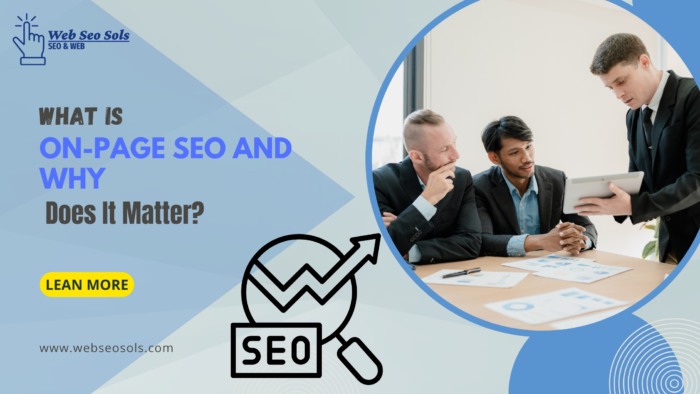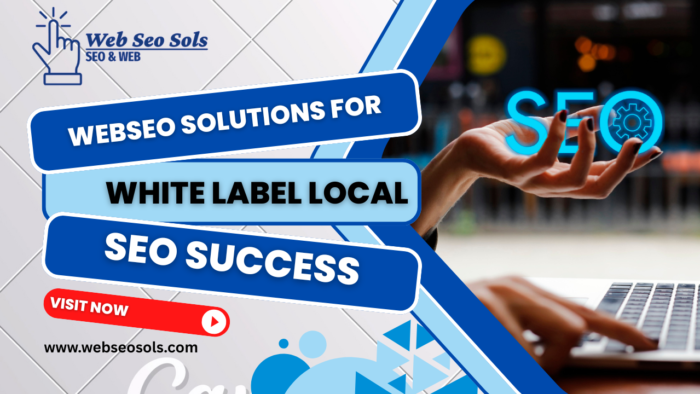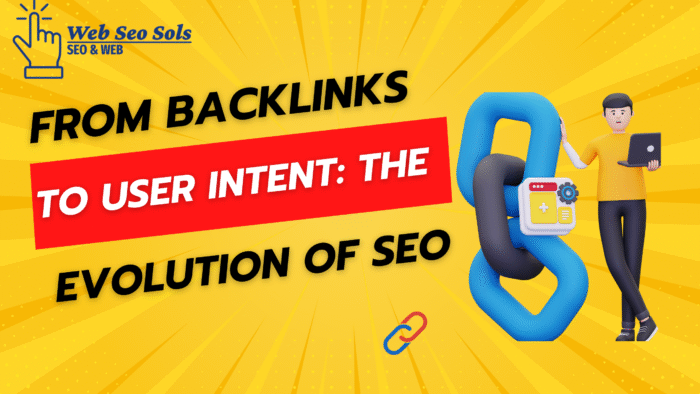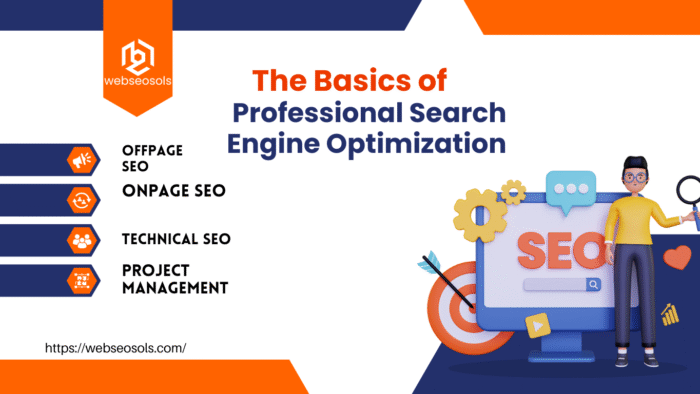In today’s digital age, having a strong online presence is crucial for businesses to succeed. Professional Search Engine Optimization (SEO) plays a significant role in helping websites rank higher on search engine results pages, ultimately driving more organic traffic. In this guide, we will explore the basics of Professional Search Engine Optimization and provide step-by-step instructions on how to optimize your website for better visibility and ranking.
Understanding search engine optimization and Its Importance
Search Engine Optimization, or SEO, is an important digital advertising strategy geared toward enhancing a website’s visibility in search engine effects. This manner entails a chain of strategies and methodologies designed to raise a website’s position on seek engine results pages (SERPs), thereby growing the chance of capturing natural visitors. In the world of digital advertising and marketing, visibility is without delay correlated with internet site traffic, which in flip, is crucial for reaching business targets including logo awareness, lead era, and income conversions.
At its middle, SEO helps a higher connection between agencies and their audience. By optimizing for key phrases and phrases that capability clients use in their on-line searches, groups can ensure that their content material and services are without problems discoverable. This now not handiest improves the consumer experience by way of supplying relevant and well-timed facts but additionally alerts to serps the value and relevance of the internet site’s content, in addition boosting its ranking potential.
Search engine optimization isn’t static
Moreover, search engine optimization isn’t always a static exercise but a dynamic and ongoing procedure that calls for constant tracking, evaluation, and changes to keep pace with seek engine algorithms’ ever-changing criteria. It’s a critical investment within the virtual fitness and competitiveness of a commercial enterprise, offering lengthy-time period advantages that can substantially effect a business’s backside line.
The importance of search engine optimization extends past mere visibility; it is about establishing credibility and trust with your target market. Websites that appear on the primary web page of search effects are frequently perceived as greater truthful and authoritative, making search engine optimization a vital element in building your logo’s on line popularity.
Conducting Effective Keyword Research
Keyword research stands at the coronary heart of a hit SEO approach, serving as the compass for directing your content toward what your target market seeks. This fundamental technique starts offevolved with knowledge of the subjects and queries that resonate most with ability customers. To embark on this investigative journey, leverage tools like Google Keyword Planner, SEMrush, or Ahrefs, that may unearth a treasure trove of keyword insights based on search volume, opposition stage, and relevance.
Long-tail keywords
Dive deep through identifying long-tail keywords—those particular, regularly longer terms that cater to the extra specific inquiries of searchers. These gemstones are much less aggressive and might dramatically growth your probabilities of ranking higher. Consider additionally the reason behind searches—whether informational, navigational, transactional, or industrial—as this shapes the content material you need to create to satisfy the ones needs.
Don’t forget the electricity of studying competition’ key phrases. By analyzing the terms and phrases that a success competition rank for, you can find gaps in your very own method or discover proposal for new content material regions to discover.
Remember, keyword research isn’t always a one-time mission but a non-stop endeavor. The digital landscape shifts and patron behaviors change, necessitating ordinary opinions and updates to your keyword list. Keeping your finger at the pulse of keyword trends ensures that your content remains relevant and visible within the dynamic global of seek.
Crafting High-Quality, search engine optimization-Friendly Content
To craft content material that resonates with both your target audience and search engines like Google and yahoo, begin by using integrating your carefully researched keywords evidently into your articles, blog posts, or internet pages. The cognizance should constantly be on presenting cost in your readers, addressing their desires and questions in a way that is each informative and tasty.
Beyond mere key-word incorporation, shape your SEO content with clarity in mind. Use headings and subheadings (H1, H2, H3 tags) to organize your mind and subjects truly. This now not best complements person enjoy by means of making your content less difficult to scan however additionally aids search engines in expertise the hierarchy and relevance of your statistics, doubtlessly boosting your SEO ratings.
SEO strategy factors
Additionally, incorporating multimedia elements like pics, videos, and infographics can substantially your content material. These factors can cut up text, making your content greater reachable and attractive, but they also provide an opportunity for further optimization via alt texts and record names aligned together with your SEO strategy.
Engaging, well-crafted content material encourages visitors to spend greater time for your internet site, reducing leap fees and growing the possibilities of conversion. It also will increase the probability of your content material being shared throughout social media and other platforms, which could circuitously boost your search engine optimization with the aid of producing backlinks and signaling to search engines like Google that your content material is treasured and authoritative.
Remember, the goal is to create content material that now not most effective ranks well but additionally in reality serves the wishes and hobbies of your target market. By prioritizing satisfactory and relevance, you place the foundation for a strong, SEO-pushed on line presence.
Optimizing Your Website’s Structure
Creating an intuitive and logical website structure no longer simplest enhances the person revel in however additionally plays an important function in optimizing your site for serps. Start by way of mapping out a clear and easy navigation path that lets in users to locate what they may be searching out with minimal clicks. A nicely-described hierarchy, with a clean distinction between primary pages and subpages, helps serps recognize your internet site’s layout and the relative significance of each page.
Ensure that your URL shape reflects this hierarchy, the usage of readable and keyword-applicable URLs for every page. This makes it simpler for serps to move slowly your site and for customers to apprehend the content material of a page earlier than clicking on it.
XML sitemap and HTML sitemap variations
Incorporating a sitemap, both XML and HTML variations, further aids engines like Google in indexing your website efficaciously. An XML sitemap is specifically useful for serps, at the same time as an HTML sitemap improves navigation for customers, contributing to a higher average revel in.
Additionally, streamline your internet site’s navigation via removing any unnecessary or redundant pages. This not most effective makes your web site more consumer-friendly but additionally focuses search engine crawlers on your maximum essential content material. Regularly evaluate your internet site’s structure and navigation to ensure they continue to be aligned together with your search engine optimization desires and provide the high-quality viable revel in for both users and serps.
Understanding and Implementing On-Page search engine marketing Elements
On-page search engine optimization is essential for ensuring that your content isn’t always only visible however additionally compelling to each engines like Google and users. It starts with the meticulous crafting of Meta titles and descriptions that correctly mirror the content of your pages whilst engaging customers to click on through from search effects. These elements ought to be concise, incorporating targeted keywords in a herbal way that speaks directly to user reason.
Heading tags (H1, H2, H3, and so forth.) organize and emphasize the shape of your content, making it digestible for readers and comprehensible for search algorithms. Each web page should have a clear, relevant H1 tag, followed by next headings in a hierarchical order to define key factors or subjects blanketed within the content.
Images decorate the user experience and can make a contribution to search engine optimization while nicely optimized. This approach the usage of descriptive document names and incorporating alt textual content that explains the image material, allowing search engines to index them along text. It additionally improves accessibility for customers with visual impairments.
Internal linking techniques
Internal linking techniques are important for on-page Professional Search Engine Optimization, guiding visitors to associated content material and dispensing page authority throughout your web page. Links have to be relevant, including fee to the consumer’s adventure by way of providing in addition information or context.
Finally, ensuring your content is super, informative, and solutions the person’s question is paramount. It’s no longer pretty much catering to search engines like Google and yahoo but handing over genuine cost to your target market, encouraging engagement, and fostering believe.
Mastering Off-Page SEO Techniques
Mastering off-page search engine optimization strategies requires a strategic technique to beautify your website’s authority and relevance inside the eyes of search engines like Google and yahoo. One of the most effective strategies is need the cultivation of splendid one-way links from professional sources. These one way links act as votes of self-assurance, signaling to engines like Google that different websites price your content sufficient to hyperlink to it.
Social media advantage
Engaging actively on social media platforms also can drastically advantage your off-web page search engine marketing efforts. By sharing your content on social media, you may increase its visibility and inspire greater customers to link returned to it. This now not only drives direct visitors however additionally boosts your back-link profile.
Online reputation management is every other critical thing of off-page SEO. Actively tracking mentions of your emblem and tasty with both positive and poor remarks demonstrates your dedication to client satisfaction and can impact your website’s belief on-line.
Remember, off-page search engine optimization isn’t just about link building. It’s approximately creating a presence and recognition to your brand across the web. By consistently making use of these techniques, you can improve your website online authority, which is pivotal in reaching better search engine ratings.
Utilizing Technical search engine marketing to Improve Site Performance
Technical search engine optimization is pivotal in excellent-tuning the behind-the-scenes aspects of your internet site to enhance its search engine friendliness. This process starts offevolved with improving website pace, as quicker-loading pages no longer best rank better but also offer a better consumer revel in. Implementing strategies like compressing pics, leveraging browser caching, and minimizing CSS and JavaScript can notably lessen page load times.
Ensuring your internet site is cellular-pleasant is every other crucial element of technical search engine optimization, in particular on account that mobile searches have overtaken computer searches. Google’s mobile-first indexing prioritizes cellular-optimized web sites, so it is vital to use responsive design that adjusts content seamlessly throughout devices.
Crawlability is basis of technical search engine
Crawlability is likewise a basis of technical search engine marketing. It involves ensuring serps can efficaciously navigate and index your website’s content. Utilizing a robots. Txt file to manual search engine crawlers, developing an XML sitemap, and making sure a smooth URL shape can all useful resource in better indexing.
Additionally, implementing schema markup can beautify your internet site’s visibility in seek consequences with the aid of offering engines like Google with a clearer information of your content material’s context. This can result in rich snippets, which improve click on-through charges.
By addressing those technical factors, you could pave the way for smoother website online navigation, higher indexing, and in the long run, stepped forward seek engine ratings.
Analyzing and adapting your search engine optimization Strategy
To make certain your SEO strategy remains powerful and aggressive, it’s important to have interaction in non-stop evaluation and variation. Use analytics tools like Google Analytics and Search Console to song your internet site’s overall performance metrics which includes organic traffic, leap charge, and conversion fees. Identify which pages and content are using site visitors and which areas can also require optimization. Stay vigilant of modifications in seek engine algorithms that can shift the SEO panorama and necessitate changes in your method. Regular search engine marketing audits can discover technical issues, on-page optimizations, and rancid-web page possibilities to decorate your internet site’s health and performance.
Monitoring Competitors and Adapting to Market Trends
Pay attention to your competitors’ techniques with the aid of monitoring their seek scores, content updates, and one-way link profiles.
This perception can inspire new search engine marketing approaches and spotlight areas for development for your personal method. Adaptation is fundamental; as marketplace traits evolve and new key phrases emerge, replace your content and search engine marketing practices as a consequence. Engaging in this ongoing process guarantees your internet site stays relevant, authoritative, and seen in the dynamic environment of seek engine effects pages.
Conclusion
Wrapping up, the journey via Professional Search Engine optimization Strategy unveils its unmatched significance in today’s online market. Mastering the fundamentals of search engine marketing is not just about retaining up with virtual tendencies however is relevant to connecting with your target market and improving your brand’s digital footprint. Through diligent software of key-word studies, content creation, on-web page and off-web page optimization, and technical search engine optimization, organizations can carve out a distinguished space in seek engine consequences.
Embracing SEO as a Continuous Process
The dynamic nature of SEO necessitates a dedication to ongoing gaining knowledge of and model, making sure that your techniques are aligned with the modern day seek engine algorithms and marketplace needs. Embrace search engine marketing as a persistent technique, and also you’ll unencumber the ability for massive growth in on-line visibility and engagement. Remember, the essence of SEO lies in no longer simply aiming for higher scores but in fostering a treasured and handy on-line presence that resonates with users and drives significant interactions. for more info visit us https://webseosols.com/
